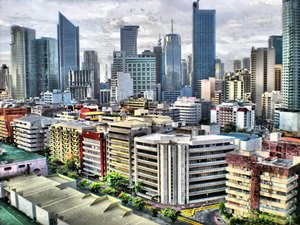 The uniqueness and exoticism of the cuisine of the Philippines is due to the mix of cultures of the peoples living in the country. The culinary traditions of Spaniards, Koreans, and Indians formed the basis of the local cuisine. Some dishes are obviously influenced by Chinese, Arabic, and French cuisines. The basis of the diet is rice, as in many Asian countries. It is cooked as a separate dish, used as a side dish or instead of bread. Rice is fried, boiled, and added to appetizers and salads. Boiled rice is often used as a side dish for fish, seafood, and vegetables.
The uniqueness and exoticism of the cuisine of the Philippines is due to the mix of cultures of the peoples living in the country. The culinary traditions of Spaniards, Koreans, and Indians formed the basis of the local cuisine. Some dishes are obviously influenced by Chinese, Arabic, and French cuisines. The basis of the diet is rice, as in many Asian countries. It is cooked as a separate dish, used as a side dish or instead of bread. Rice is fried, boiled, and added to appetizers and salads. Boiled rice is often used as a side dish for fish, seafood, and vegetables.
1. You should get travel insurance for the entire duration of your trip to the Philippines. You can do this through any travel agency or insurance …
Read further
Read further
The Philippines is a real tropical paradise and an opportunity to please your child with the sun and sea during the cold winter months. The period …
Read further
Read further
 The popular tinola soup is made from chicken. Papaya and Moringa leaves are also included. A large amount of ginger is a feature of the dish. Monggo is another soup loved by Filipinos. It is made from green lentils, onions, garlic, meat, and Moringa leaves. Filipino housewives but not only chefs in restaurants love to cook this dish.
The popular tinola soup is made from chicken. Papaya and Moringa leaves are also included. A large amount of ginger is a feature of the dish. Monggo is another soup loved by Filipinos. It is made from green lentils, onions, garlic, meat, and Moringa leaves. Filipino housewives but not only chefs in restaurants love to cook this dish.
Many products from China and Taiwan are sold in the Philippines. Prices are very low here. So it's better to take a bigger suitcase with you. Many …
Read further
Read further
 Some of the dishes include unusual components. For example, the leaves of the Moringa tree are part of many dishes. They contain huge amounts of calcium, vitamin C, vitamin A, potassium, iron, and magnesium. Sweet potato leaves are used to make a dish called Laing. They are stewed in coconut milk with spices and chili. In addition to meat and vegetables, an unusual component – plantain (vegetable banana) is added to Pochero.
Some of the dishes include unusual components. For example, the leaves of the Moringa tree are part of many dishes. They contain huge amounts of calcium, vitamin C, vitamin A, potassium, iron, and magnesium. Sweet potato leaves are used to make a dish called Laing. They are stewed in coconut milk with spices and chili. In addition to meat and vegetables, an unusual component – plantain (vegetable banana) is added to Pochero.
Holidays which are usual for the whole world, and local holidays, which are unknown in Europe, are celebrated in the Philippines. This is due to the …
Read further
Read further
 Most desserts are made from numerous local fruits. Halo-halo, an unusual local cooling dish is made on their basis. It is a mixture of ice, fruit, and local condensed milk. It is considered local ice cream. Dulce de Leche (sweet milk) came to the local cuisine from Spain. It is extremely similar to condensed milk. It is eaten separately or added to other dishes. Ginataan is made from coconut milk. There are many varieties of this dish. For example, this is a sweet soup or rice balls. An unusual sweetness is made from glutinous rice with coconut milk, cream, and banana leaves.
Most desserts are made from numerous local fruits. Halo-halo, an unusual local cooling dish is made on their basis. It is a mixture of ice, fruit, and local condensed milk. It is considered local ice cream. Dulce de Leche (sweet milk) came to the local cuisine from Spain. It is extremely similar to condensed milk. It is eaten separately or added to other dishes. Ginataan is made from coconut milk. There are many varieties of this dish. For example, this is a sweet soup or rice balls. An unusual sweetness is made from glutinous rice with coconut milk, cream, and banana leaves.
More than 7,000 Philippine Islands are located in the tropical marine climate zone. Summer, characterized by heat and dry weather lasts from January …
Read further
Read further


